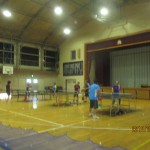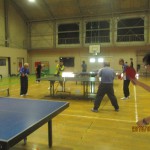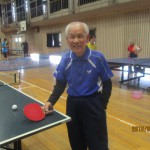日本人の桜に関する態度は、昔と今では違っているということらしい。その説明は下記。
Japanese people are often referred to as great lovers of nature. It is also observed that they have a keen appreciation of the scenic beauty with which their country is blessed. Japan’s geographically and climatically distinguishing traits seem to have helped develop their sensitivity to subtle nuances in landscape that may escape the notice of foreigners. History has also played a part in forming their aesthetic sense as we can observe that Japanese people have not always displayed the same reaction to scenery in nature.
When cherry trees come into full bloom people will not only stroll around enjoying the sight but also gather sitting on mats below the trees and participate in socializing, drinking, and singing. Most Japanese believe that it is very natural for them to enjoy the bloom of spring this way, but they are all wrong.
It was not until the Edo era that people came to be carried away by the cherry blossoms. Before then, the space beneath the cherry blossoms was far from a delightful spot and was rather avoided. This was because people were afraid of its atmosphere, sensing the presence of some evil spirit there, especially when no one was around. In fact, several people were rumored to have gotten lost there, driven out of their wits.
In the past, at Suzuka Pass, which is still famous for its mountain cherry trees, travelers had no choice but to pass through a cherry tree forest and they would run through it as fast as they could, as if running for their lives. When travelers came to the forest in the spring, their fear would peak. Even the best of friendships between two travelers could be broken by the time they reached the other end of the forest, since the slower runner would bear a lifetime grudge against his faster friend.
This belief in the spell of the cherry blossoms gave birth to Ango Sakaguchi’s famous novel “In the Forest, Under Cherries in Full Bloom” in which a robber who attacked travelers at Suzuka Pass ended up falling victim to the evil spirit of the cherry blossoms.
By the same token, although this may sound contradictory, Japanese have not always admired the subdued tint of autumnal leaves. Before the taste of the simple and subdued was introduced as wabi and sabi, Japanese were more fascinated by the blazing crimson of tinged maple leaves in autumn. Such taste was reflected especially in their clothes. Foreigners would be amazed by the vividly bright colors and showy patterns of the clothes worn by noble ladies in the Heian period. This may be a good example to show that nothing can be taken for granted in our view of any specific culture.
(2015年 武蔵大学 入試問題)


